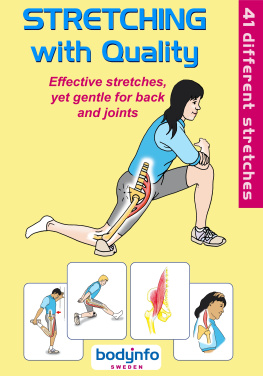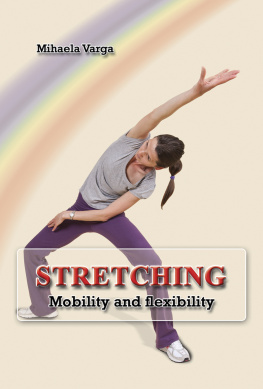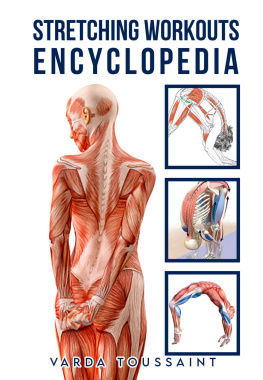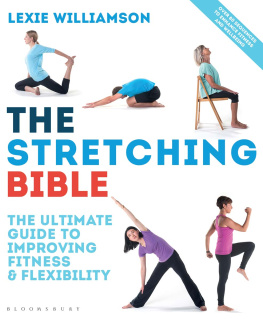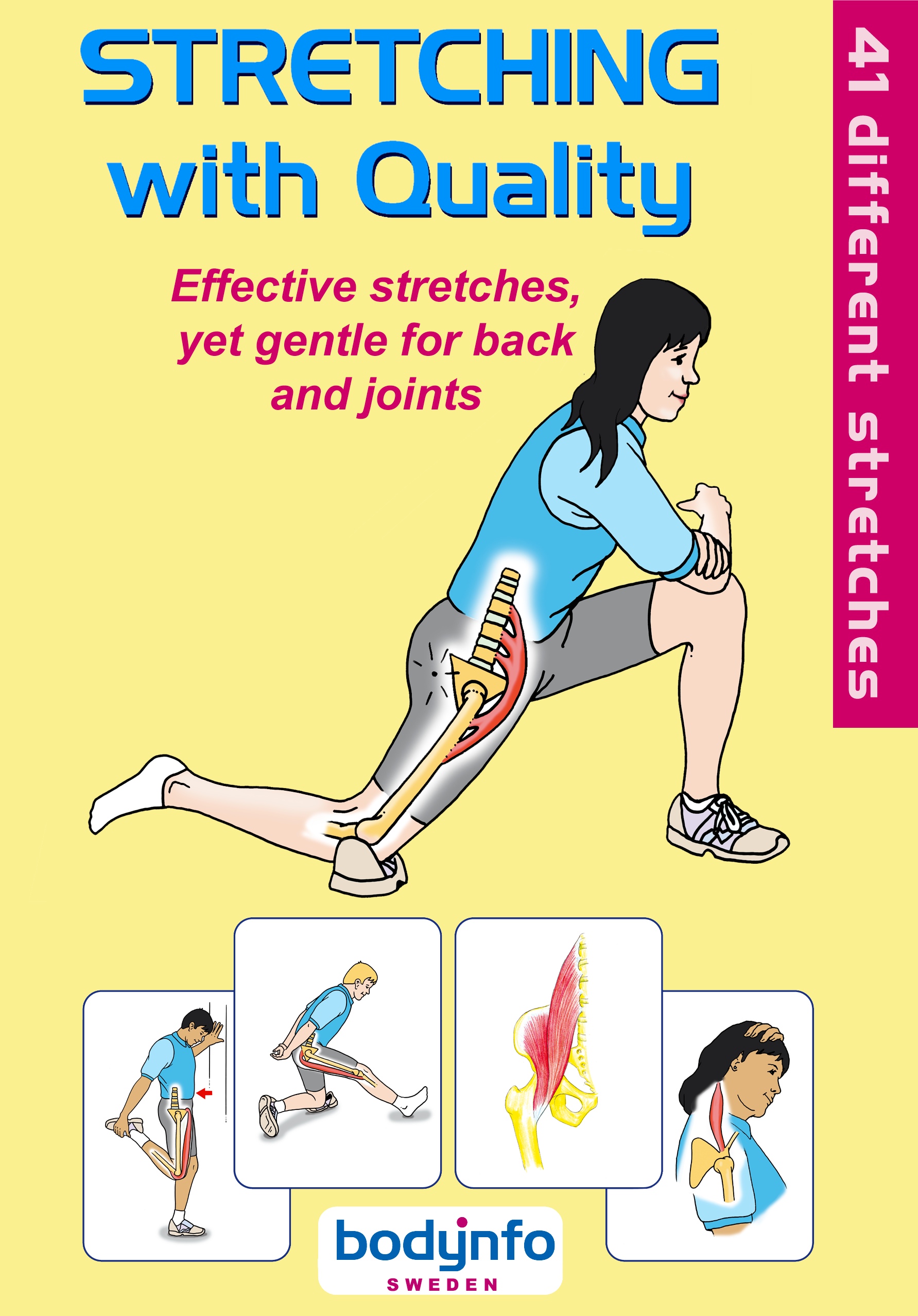Flexibility Training
Factors that define the limits of physical performance include aerobic capacity, strength, technique, flexibility and psychological characteristics. The most common cause of reduced flexibility among healthy individuals is shortened musculature.
Flexibility training is designed to maintain and improve upon flexibility that is limited by shortened musculature. The type of flexibility training that is aimed at lengthening a muscle or muscle group is commonly known as stretching.
***
Ankle Sprain - The App
All the information required to be able to rely on your foot again and reduce the risk of repeated sprains.
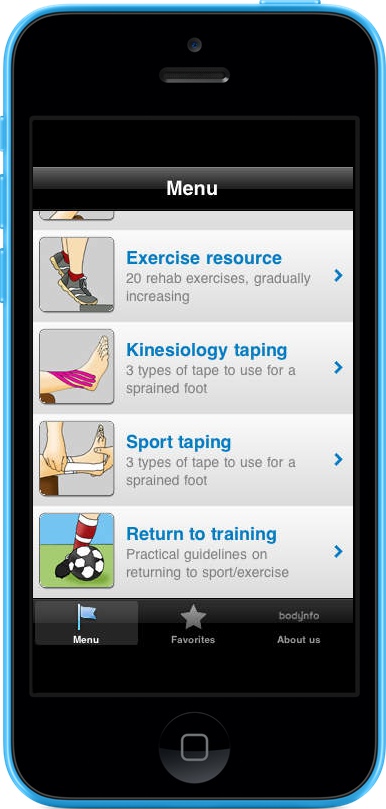

Apple, the Apple logo, iPad, and iPhone are trademarks of Apple Inc., registered in the U.S. and other countries. App Store is a service mark of Apple Inc.
Bodynfo AB 2013
ISBN: 978-91-87563-05-8
Produced by Bodynfo AB, stersund, Sweden, www.bodynfo.se
Text and idea: Torsten Larsson, P.T. and Ulf Gransson, Physical Education Instructor
Illustrations: Bertil Nordstrm, Besteco AB, www.besteco.se


Contents
Stretch the muscles - spare the joints!
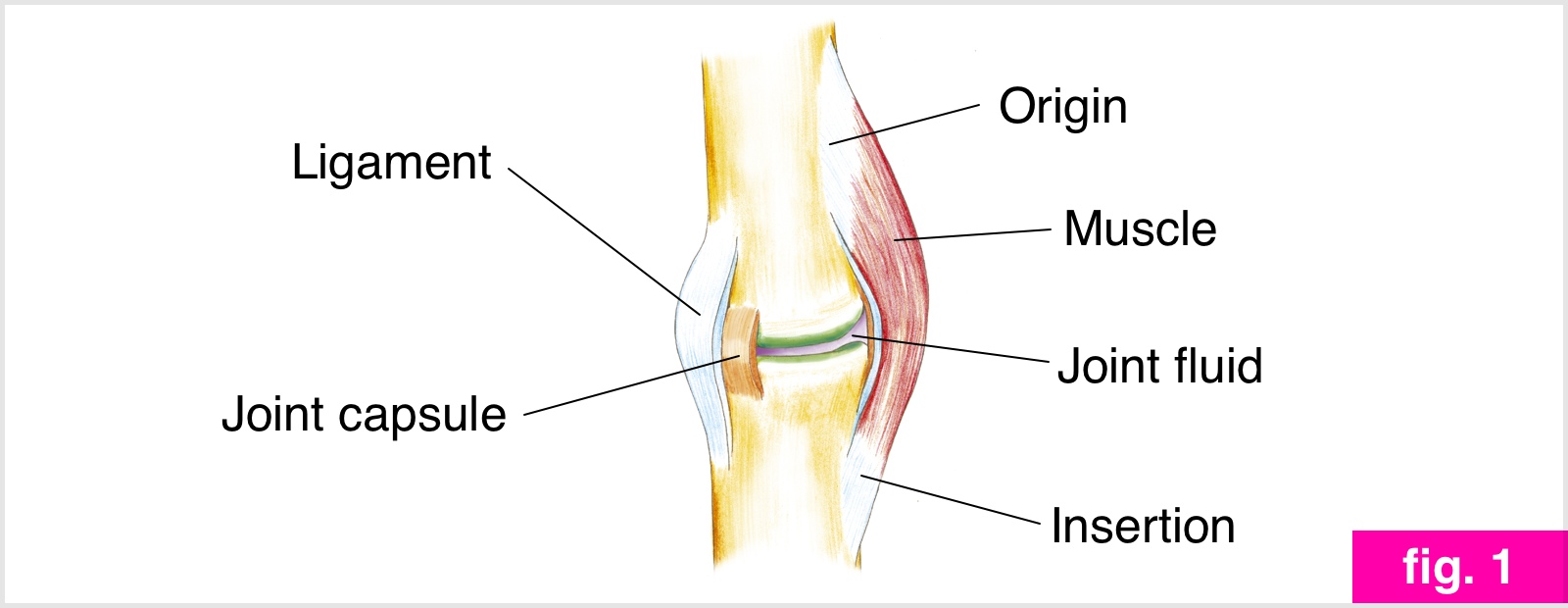
The purpose of stretching exercises is to improve the flexibility of a MUSCLE or MUSCLE GROUP. In contrast, most joints joint capsule and ligaments. Because of this, stretching exercises should never be performed so as to load a joint at the end range, which could lead to troublesome laxity of the ligaments and/or joint capsule.
Excessive laxity of these structures can lead to reduced load tolerance and increased risk of injury, such as in the case of a previously sprained ankle.
This principle is very important to keep in mind when stretching the lower back. Many stretching exercises can, through end-range loading at the joints, expose the lower back to potentially damaging loads in the case of incorrect technique. Poor technique also greatly reduces the amount of stretch applied to the .
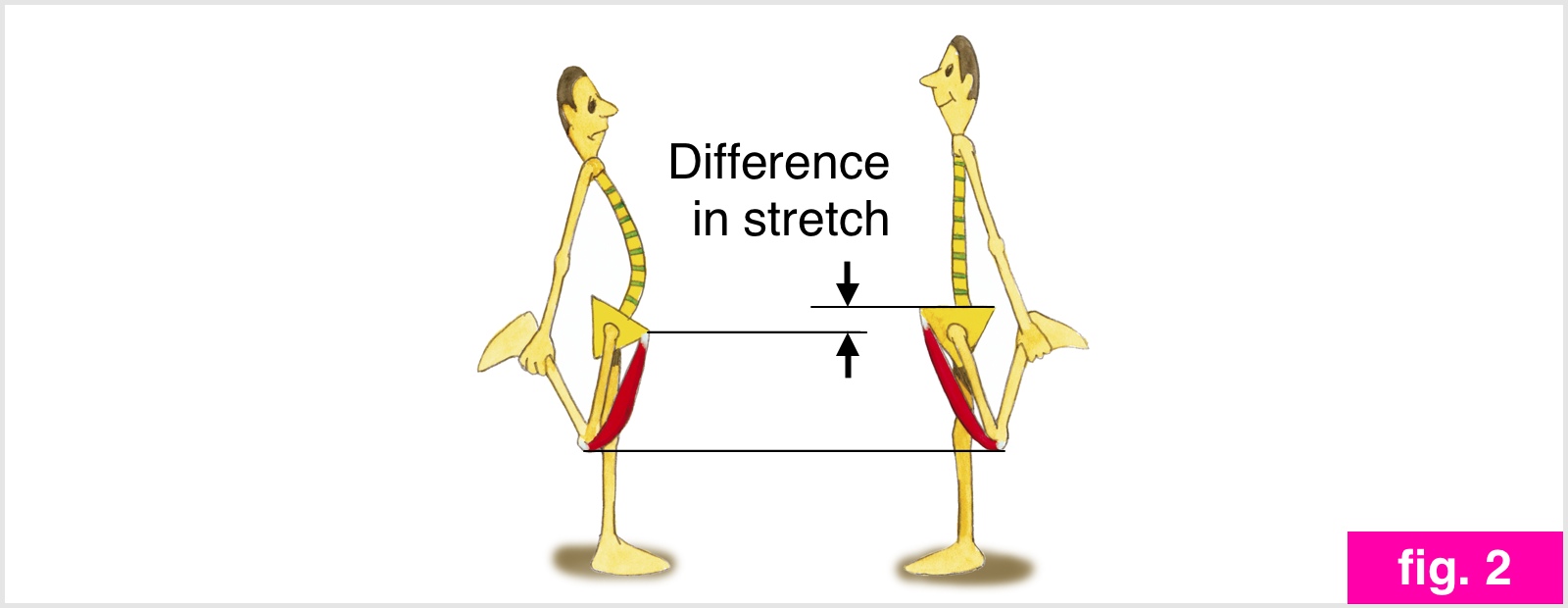
Individuals who are already by nature more flexible than normal should of course not spend too much time doing flexibility exercises. Intensive muscle stretching can actually result in reduced performance in such individuals, as well as potentially increasing their risk of injury rather than decreasing it. If these over-flexible individuals spend any time performing stretching exercises it should be limited and aimed at specific muscle groups for a specific purpose. Perhaps most importantly, the exercises must be performed with correct technique and with quality.
A muscle consists of a large number of muscle fibres, each of which is surrounded by a thin sheath of connective tissue. Bundles of muscle fibres are held together by bands of connective tissue. These bundles build a muscle belly, which is also surrounded by connective tissue. This means that when we stretch a muscle we are also stretching connective tissue. If the stretching is too powerful it can lead to microscopic tears in the muscle fibres and connective tissue. The resulting scar tissue can cause the muscles to become less elastic, which can lead to stiff and achy muscles.
This makes it important not to stretch TOO hard. Have patience and understand that improving muscle flexibility can take a long time - weeks or even months.
***
Quality is key
Muscle stretching is considered to reduce the risk of injury, improve flexibility, and hasten recovery after training and competition. Stretching can also be effective treatment for certain painful conditions. Experience has shown that achieving the desired results from stretching is, like with all other types of training, dependent upon quality and proper technique.
The muscles to be stretched and the degree of flexibility necessary are dependent upon the flexibility required by the sport or activity in question. It is also important to analyze muscle demands during training and competition in order to be able to tailor the programme of stretching exercises accordingly.
To facilitate this analysis we have included a description of the function of each muscle in the exercise library. A muscles function can be described as the action (or actions) that occur when the muscle contracts.
Instructional Exercise Library
In consideration of the previously described need for quality while practising the muscle stretching exercises we have been very careful in the exercise library to give complete instructions including both illustrations and descriptions of how the movements are to be done. To make it easier to achieve the correct technique we have even described common errors in the text and occasionally also with an illustration as shown in the example above.
Our experience from working with patients and teaching courses in sports medicine is that there are significant technical deficiencies in the way many people perform these types of flexibility training. Improper technique can not only create instability in certain joints, it can also prevent improvements in muscle flexibility, which must be seen as a waste of training time.
***
The common principles for all flexibility training
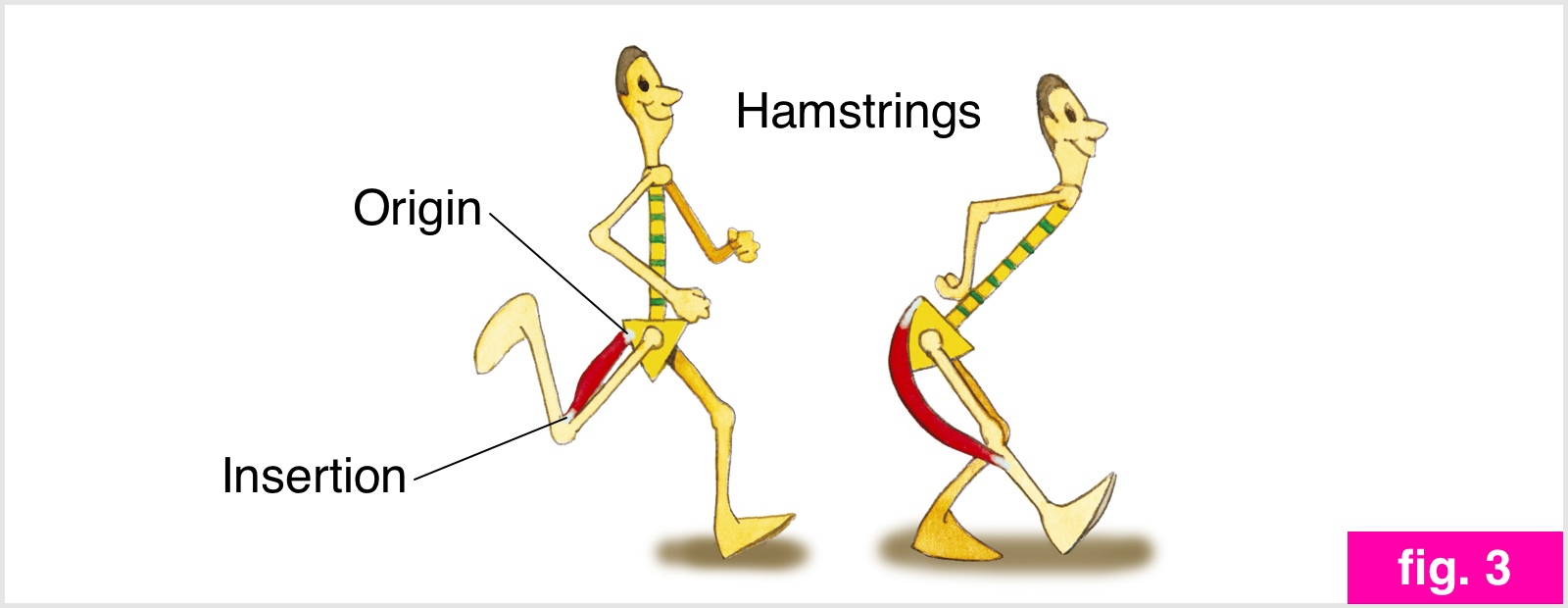
The muscle works by contracting, becoming shorter, and is stretched by being lengthened as much as possible.
The muscles origin and insertion must be moved as far apart from each other as possible. This is accomplished by moving in a direction (or combination of directions) that are opposite to those which occur when the muscle contracts.
The muscle must be as relaxed as possible.
Stretch one muscle at a time.
The starting position must be stable and relaxed.
Joints must not be loaded at end-range, especially the lower spine .
Some muscles (for example, the hamstrings on the back side of the thigh) cross over two joints .
This makes it important to have control over both joints simultaneously. The action of the hamstrings is to flex the knee and extend the hip. In order to stretch the muscle the opposite motion must be performed in both of these joints, which results in an extension (straightening) of the knee and flexion of the hip. Alongside the anatomy illustration that is included with each exercise there is an indication of whether the muscle to be stretched crosses one, two or more joints.
***
Avoid these!
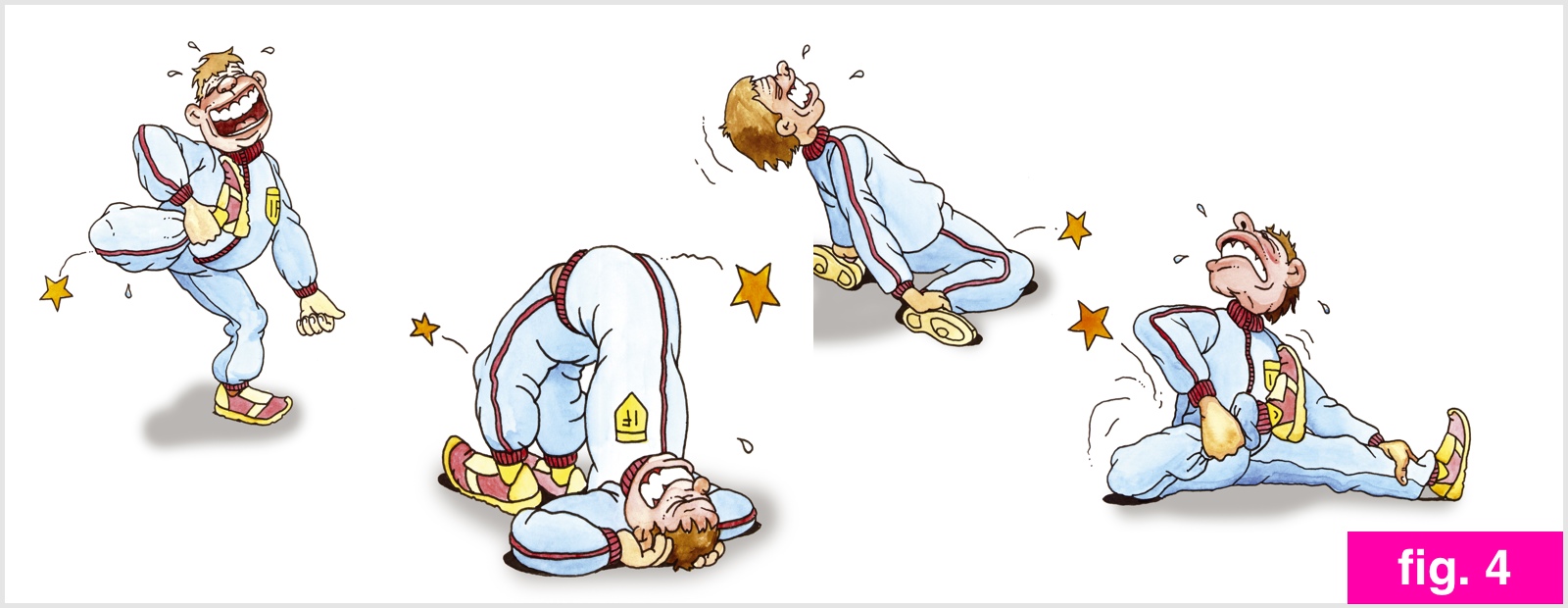
Certain stretching exercises create very unhealthy loading of the spine and joints. These exercises should be .

